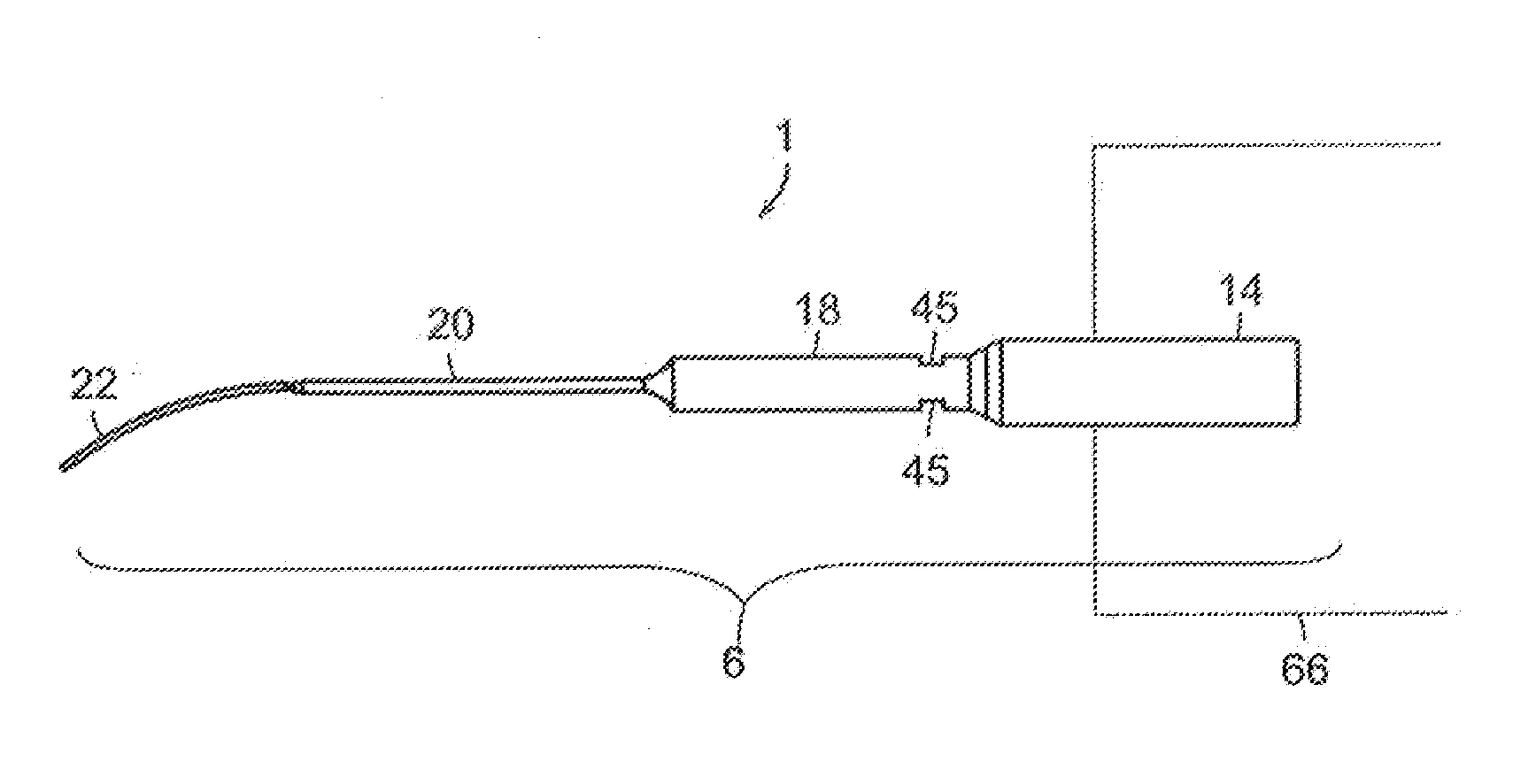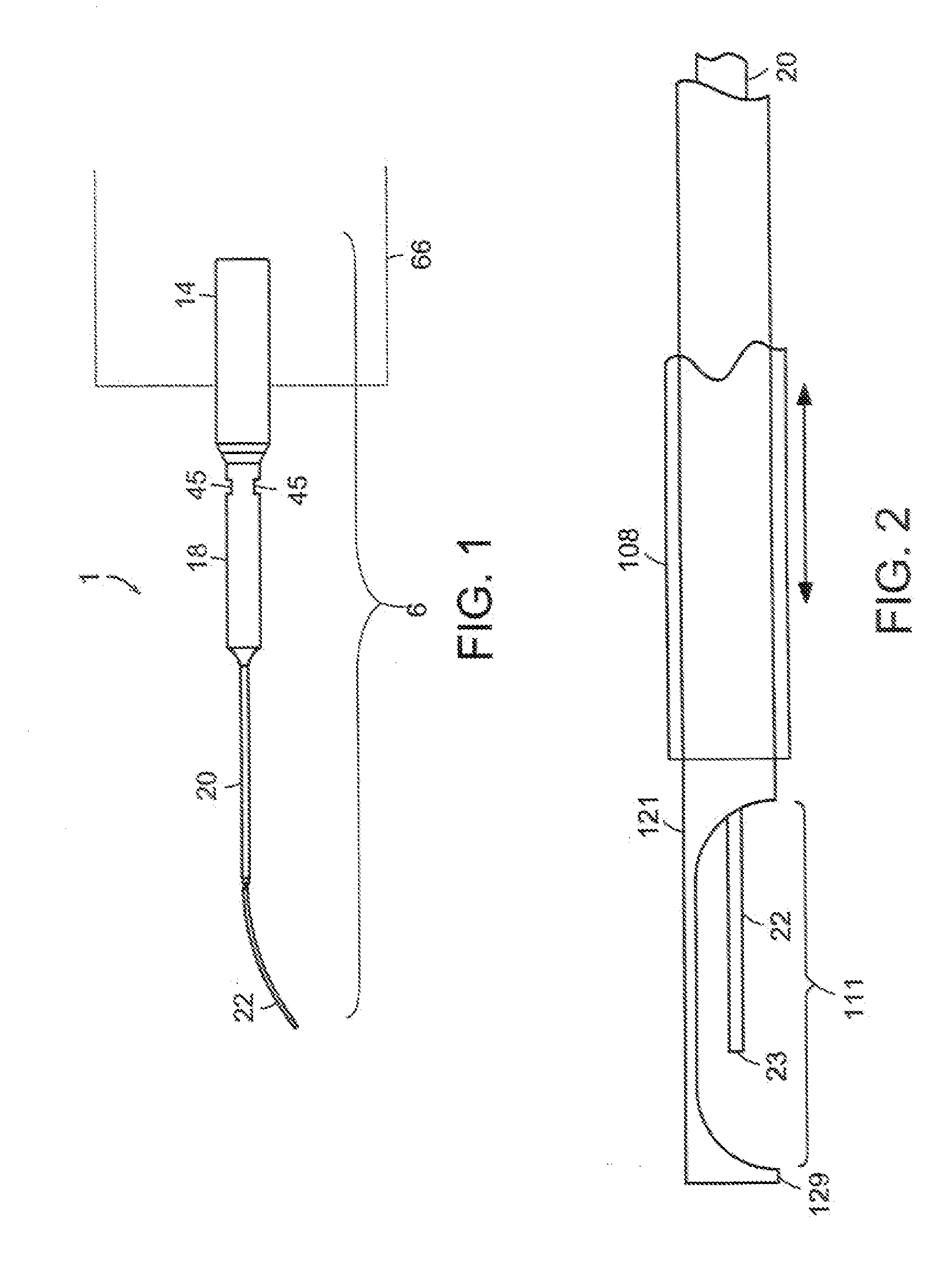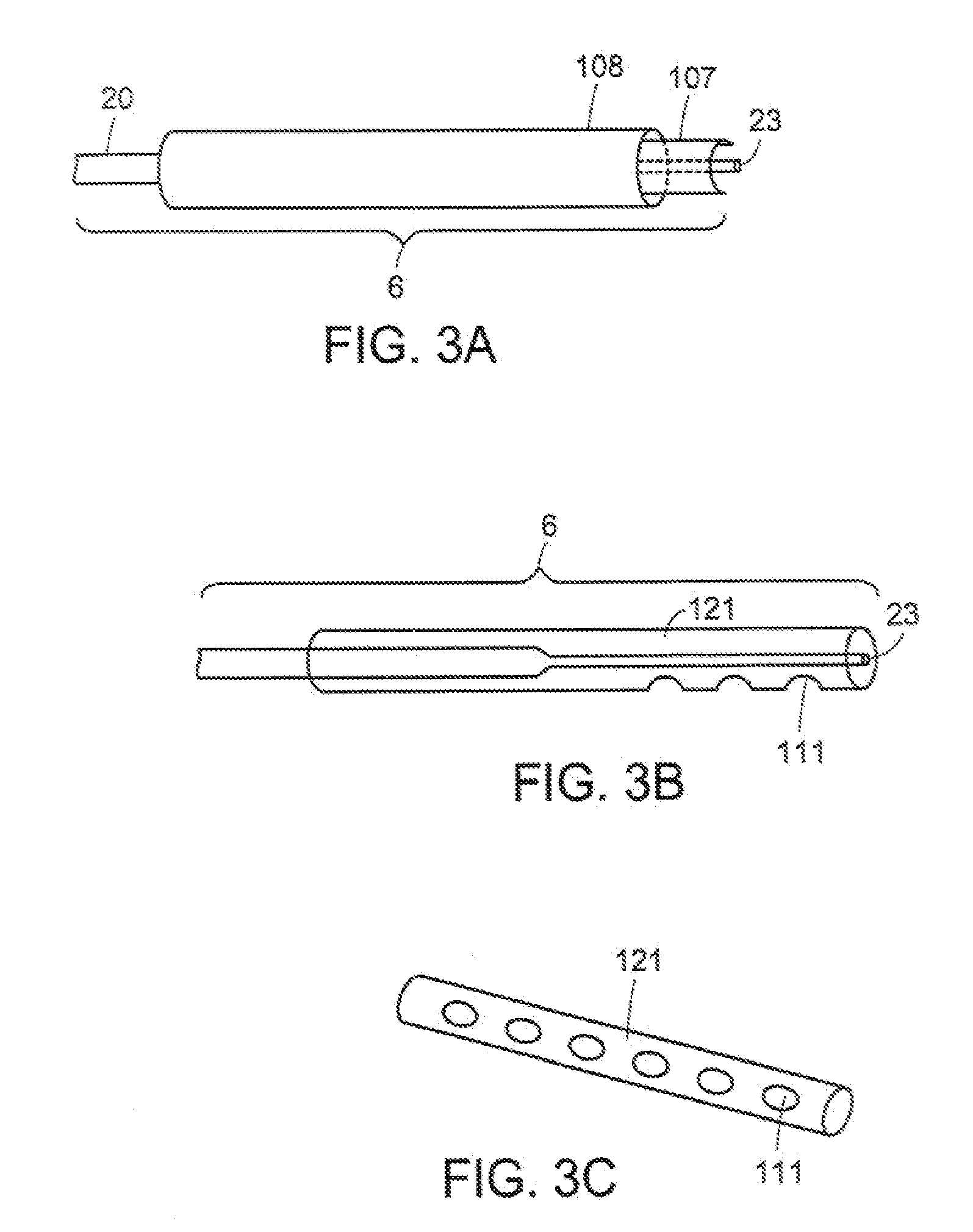Apparatus and method of removing occlusions using ultrasonic medical device operating in a transverse mode
a transverse mode and medical device technology, applied in the field of medical devices, can solve the problems of occlusion, myocardial infarction, stroke, death, etc., and achieve the effect of enhancing the performance of angioplasty procedures and reducing the likelihood of subsequent clot formation
- Summary
- Abstract
- Description
- Claims
- Application Information
AI Technical Summary
Benefits of technology
Problems solved by technology
Method used
Image
Examples
example 1
Removing Occlusions Using An Ultrasonic Medical Device and A Balloon Catheter
[0055] In one embodiment of the invention, the transverse mode ultrasonic medical device, is used in a procedure to remove an occlusion from a small diameter vessel (e.g., a native vessel, or a grafted vessel). In one embodiment, device is used in a method to reduce or eliminate an occlusion of a saphenous vein graft (e.g., such as used in a coronary bypass procedure).
[0056] A transverse mode ultrasonic probe is selected by the surgeon who will perform the procedure. The probe of the present invention further comprises a plurality of sheaths adapted to the probe, and a balloon catheter operably attached to one of the sheaths, all incorporated within a sharps container, and the container further sealed inside a sterile package, for example, a plastic bag. The user removes the container from the package and attaches the probe to the ultrasonic medical device by applying the threaded end of the probe to the ...
example 2
Clearing Occlusions From a Hemodialysis Graft
[0059] In another embodiment, the invention can be used to clear occlusions from and restore the patency of a hemodialysis graft. The graft will not require shielding from ultrasonic energy, or the use of a balloon catheter as in example 1. A probe is selected and affixed to the ultrasonic transducer in the manner previously described, through the use of the container. The probe is withdrawn from the container, and inserted into the lumen of the hemodialysis graft. In one embodiment, the probe is directly introduced into the hemodialysis graft. In another embodiment, the probe is inserted using a trocar or other vascular insertion device, such as for example, the insertion device of Applicant's utility application 09 / 618,352, now U.S. Pat. No. 6,551,337. Application of ultrasonic energy causes the probe to vibrate transversely along its longitude. Occlusive materials, such as for example a thrombus, are fragmented by the action of the pr...
PUM
 Login to View More
Login to View More Abstract
Description
Claims
Application Information
 Login to View More
Login to View More - R&D
- Intellectual Property
- Life Sciences
- Materials
- Tech Scout
- Unparalleled Data Quality
- Higher Quality Content
- 60% Fewer Hallucinations
Browse by: Latest US Patents, China's latest patents, Technical Efficacy Thesaurus, Application Domain, Technology Topic, Popular Technical Reports.
© 2025 PatSnap. All rights reserved.Legal|Privacy policy|Modern Slavery Act Transparency Statement|Sitemap|About US| Contact US: help@patsnap.com



